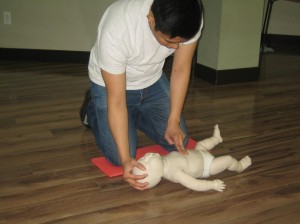Training in CPR used to be something reserved completely for health care providers and allied health professionals. But since the release of modern guidelines for performing cardiovascular resuscitation, lay persons can now be trained to perform this medical skill. At Seattle CPR, we have basic and advanced CPR/first aid courses available to lay persons and health care providers alike – so whatever your certification and training need may be, you can get it from us!
The Seattle CPR website has an online form interested students can use to sign up for a training class. You may also send in requests through e-mail or telephone call. We highly encourage students to visit us in person as well.
Other locations: Los Angeles, Las Vegas, Honolulu, San Francisco, Portland
Introduction to Medical Training: CPR

Cardiopulmonary resuscitation is a medical skill that can be performed by both lay persons and medical personnel. CPR however, is made up of different skills – (1) compressions, (2) ventilation, and (3) defibrillation. When bystanders are the first to respond to an emergency situation, they can do the first two skills at most. The third, defibrillation, can only be performed if an AED or autmated external defibrillator is available.
Training courses have two parts – lecture and practical training. The lecture portion is meant to increase a student’s knowledge regarding cardiovascular emergency management, while the practical portion is meant to improve a student’s CPR skills and techniques. The third and most important thing a student learns is attitude, and is developed through both lecture and practical training.
CPR skills and techniques
1) Chest compressions
In adult management, chest compressions are the most important part of CPR rescue. During cardiac arrest, the heart is not beating and therefore cannot send blood circulating through the body. Chest compressions pump the heart manually through each compression made in the middle of the chest. Compression depth in adults should be at least 2 inches, and given at a rate of at least 100 per minute with a ratio of 30 compressions for every two ventilations.
2) Ventilations
In CPR rescue in children, ventilations are as important as compressons, because cardiac arrest in children is primarily respiratory in nature. Ventilations are given by tilting the head back (in the absence of a spinal or neck injury) and thrusting the jaw downwards. The rescue breaths may be given through mouth-to-mouth or with a bag valve mask. BVMs are available in adult and pediatric sizes. For every breath given, make sure to allow the chest to rise and fall in between breaths.
3) Defibrillation
Defibrillation is medical management used for severe cardiac arrhythmias. Unlike what you see in movies and on TV, “shocking” the heart is not done when the reading is a flatline or asystole. Only chest compressions and medication are given during asystole. For cases where the victim is experiencing ventricular fibrillation, defibrillation can be performed.
